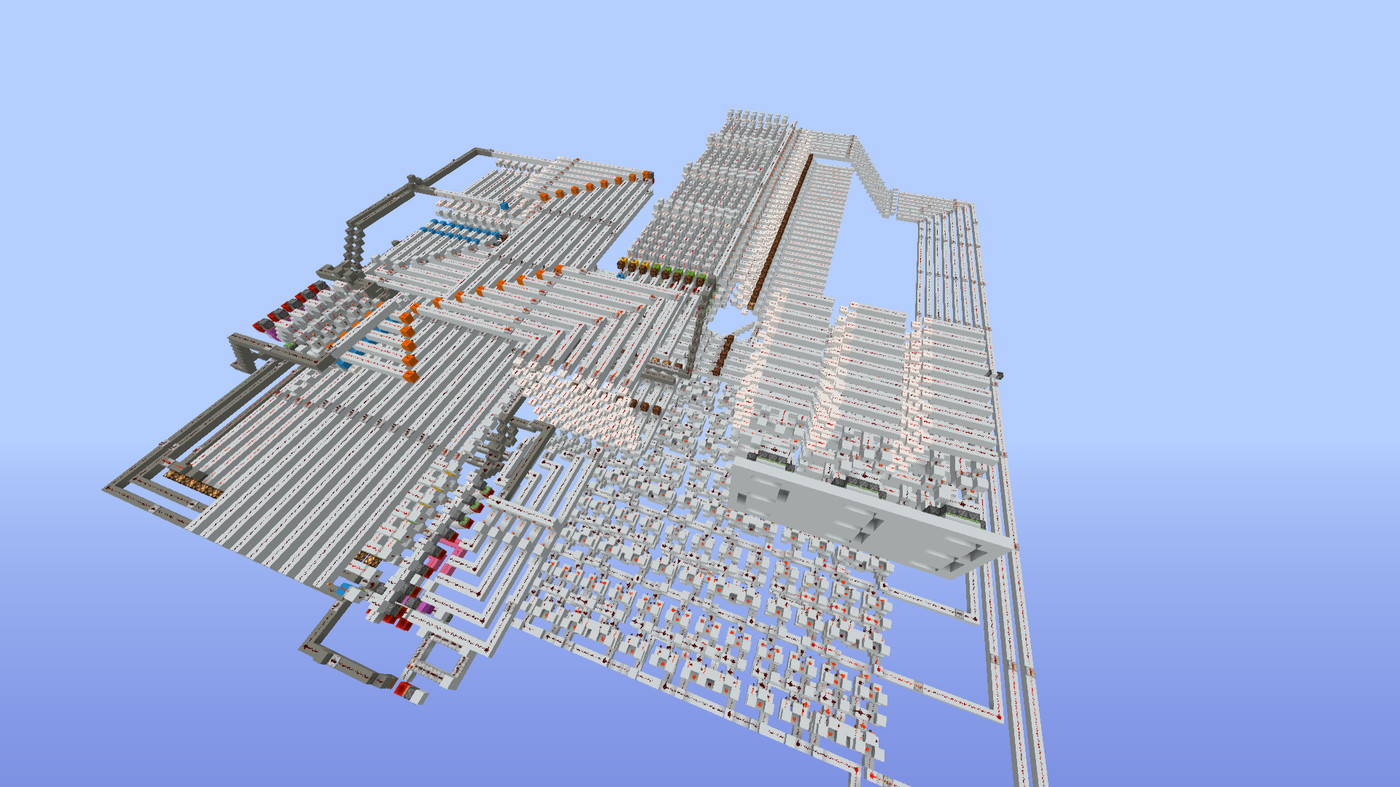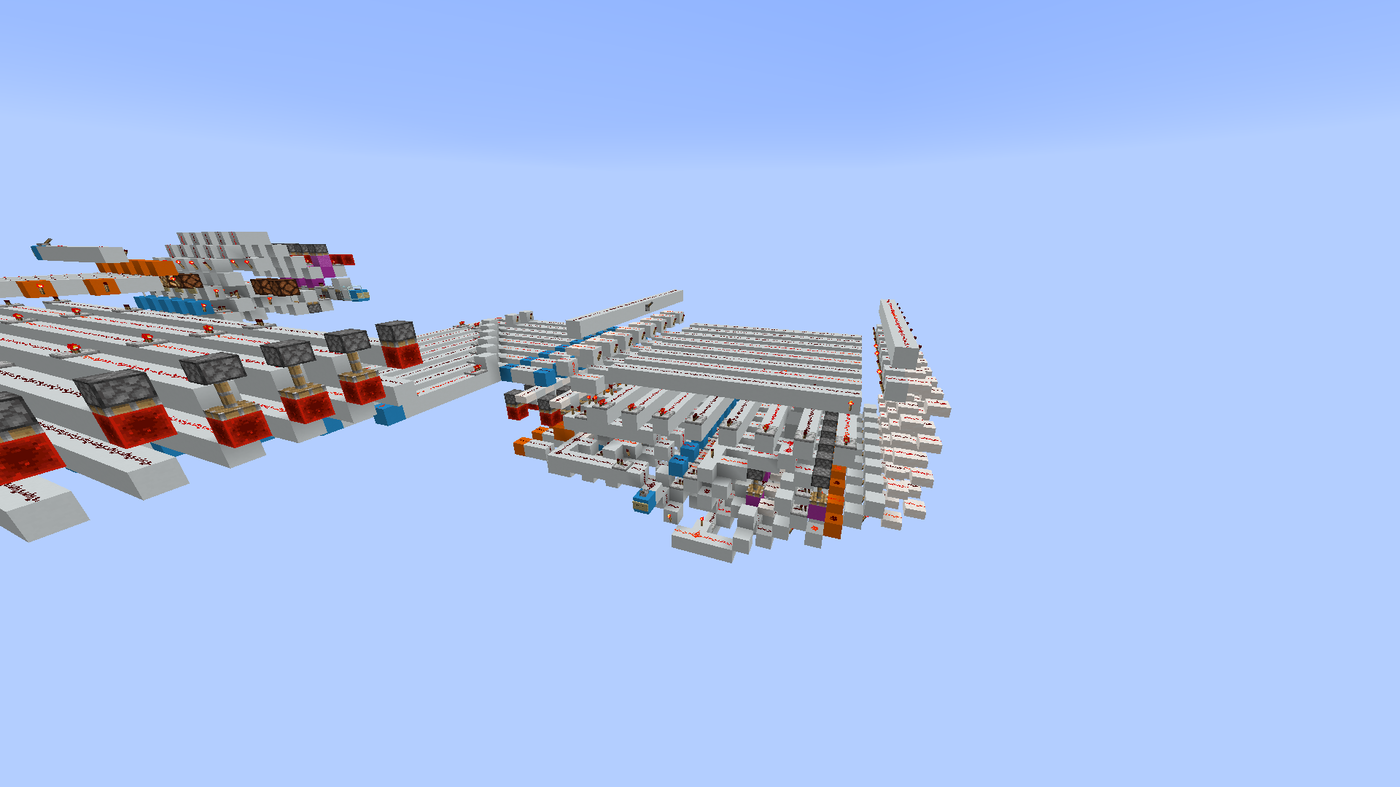Minecraft Computer
July 2019
A Turing-complete 8-bit computer built in the game Minecraft.

Above, you can see the 8-bit computer that I designed and built in the video game Minecraft using its redstone logic system. A line of redstone can either be on or off, much like how computers work at the lowest level. The computer runs a basic assembly instruction set of my own creation, and these instructions are hand-loaded into RAM before boot. The computer is capable of basic arithmetic, looping, conditional branching, and more. One of the more elaborate programs I wrote is seen executing above – it computes the Fibonacci sequence and displays the current value on the 7-segment display, halting the CPU when the sequence overflows.
Instruction Set
Each instruction is 8 bits long, and are stored in RAM as 3 bits of opcode followed by 5 bits of data, which is usually a memory address. The instruction set is as follows:
| Opcode | Mnemonic | Description |
|---|---|---|
| 000 | NOP | No operation |
| 001 | LDA | Load into register A from memory address |
| 010 | ADD | Add contents of memory address to register A |
| 011 | SUB | Subtract contents of memory address from register A |
| 100 | STO | Store register A at memory address |
| 101 | JMP | Unconditional jump to memory address |
| 110 | JMC | Jump to memory address if carry flag is set (can also be configured to be the zero flag depending on the program’s requirements) |
| 111 | HLT | Halt |
The individual microcode operations comprising each instruction are stored in ROM, a large grid of redstone torches which controls which control lines should be on or off during each step of an instruction. Instructions can range from 2 to 5 clock cycles long, depending on the operation being performed. Combining this with the low clock speed due to redstone’s inherent propagation delay, programs can take a painfully long time to execute – though they do run!
While 32 bytes of RAM and an instruction set this small is definitely on the minimalist side, it is still capable of a surprising amount when running some clever hand-written assembly.
ALU
The ALU contains two registers, A and B, which are 8 bits wide. A is directly interacted with by user code (LDA, STO), while B is used implicitly during ADD and SUB operations. The result of a calculation is automatically placed back in the A register to allow efficient chaining of multiple operations. The ALU also contains a carry flag, which is set if the result of an operation is greater than 255 or less than 0.

Future
I am planning a second version of this computer, which will be closer to something like a MOS 6502, or even maybe RISC-V. It will also likely have a GPU to allow for drawing, graphing, and other things not possible on a 7-segment display.